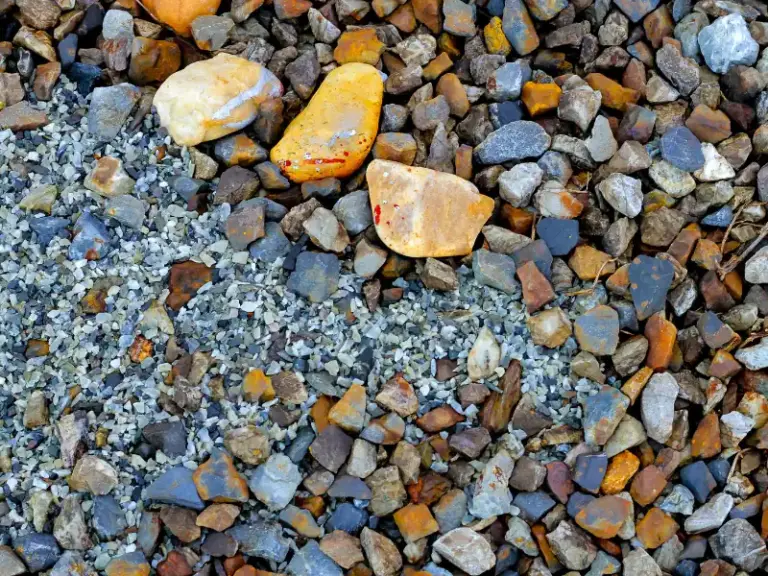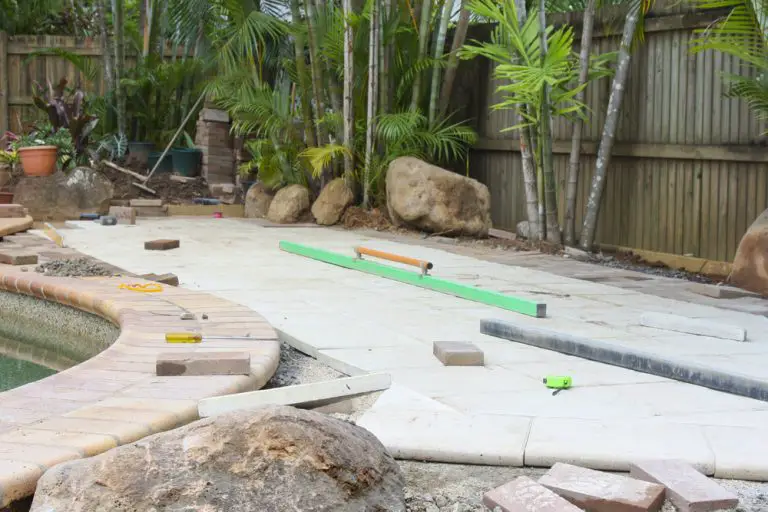Plywood Fence – Cost, Pros, and Cons
Plywood boards are not weak structures. During their production, wood grains mixed with urea-formaldehyde glue at temperatures of 140oC are compressed at 280 pounds per square inch. Various plywood grades and sizes are then extracted for your various domestic and industrial applications.
A plywood fence can last between 5 and 30 years and will give your property an aesthetic appeal. You can use plywood to fence your home for the safety of your kids or to restrict your pets within your compound. Since plywood is also customizable, you can carve out your desired shapes for your fence and even paint them.
Can you use plywood for a fence?
When choosing plywood to use for a fence, consider the size and grade of the boards. Unlike thick plywood boards, thin ones can crack, break, shrink, twist, or warp. The same will happen if you go for low-grade plywood for your fence. Nevertheless, there is a wide range of plywood to choose from, depending on your budget.
Note that there are interior plywoods and exterior plywoods. Interior plywood is used to make indoor equipment such as boards, cabinets, and ceilings, while exterior plywood is used mainly for outdoor purposes such as fencing.
Interior plywood is not recommended for fencing purposes because it is not resistant to moisture and rot. The naked sides and edges will absorb water, and over time, it will make the plywood spongy and susceptible to rot. But if you are low on budget, there is a way to go about it.
When using interior plywood for a fence, ensure to paint its sides and edges using quality exterior enamel. For example, Rust-Oleum Enamel Protective Paint will give you a protective layer over the plywood surface. The paint also dries quickly and will enhance the durability of your plywood fence.
However, we recommend external plywood for fencing. These are resistant to moisture and rot. In addition to the urea-formaldehyde glue, exterior plywoods have a water-proof adhesive to protect them from weathering and moisture.
Here are the types of exterior plywood suitable for fencing;
1. CDX
It’s the most commonly found exterior plywood. It measures between ¾ to ⅝ foot with a thickness of ½ inch. CDX is graded based on appearance. For example, we have grades A, B, C, and D suitable for fencing.
X stands for the type of glue used in compressing the plies together. Letter C and D represent the quality of the surfaces, which can be smooth or rough.
This type of exterior plywood can survive the harshest conditions. CDX is stamped with an “X” as identification for each plywood. These marks indicate that the plywood is used for outdoor purposes and is recommended for fencing.
Grades ABX, ACX, and BCX are also found in this category and will serve your fencing purposes.
2. T1 – 11
Standard T1-11 plywood has standard measurements of 19/32 inches (4ft X 8ft). You can also request customized dimensions from the manufacturer.
This type of exterior plywood is used for siding purposes and works well with fences. However, it has a rough-swan look that may not appear attractive on its vertical slats.
Once you have installed your fence, you will choose your desired paints and match your color scheme. We recommend the T1-11 plywood if you want a decorative plywood fence.
3. Marine-grade plywood.
Standard marine plywoods have a standard dimension of ¾ inches (4ft X 8ft). The manufacturer can also customize the dimensions of marine-grade plywood based on your needs.
It is the same as standard exterior plywood, except its core does not have knots. This feature makes this plywood effective when fencing an area with poor water drainage. The knots are essential for preventing the formation of water pockets within the structure.
These plywoods work more effectively in marine areas because they consist of several plies compressed together, improving their strength and durability. Thus, marine-grade plywood does not have running ends or voids. This prevents air and water from getting into the plywood and soaking it.
For that reason, this type of plywood is the most expensive. If you live in a swampy or poorly drained area, we recommend marine-grade plywood. However, the installation cost will be high.
Plywood fence cost
Plywood fence cost is calculated based on the type of material used, the size, and the number of materials needed. Other fees will include installation or labor costs and miscellaneous expenses.
● Material costs.
The cost of a plywood fence will vary depending on materials sizes, lengths, and places of installation within your compound. The cost of installing CDX will be less than the cost of installing marine-grade plywood.
A swampy area will be a bit difficult to install the fence than a dry area. Also, the cost of marine-grade plywood is higher compared to CDX, ABX, and CBX.
For instance, the cost of 15/32 inches of CDX plywood is $28.97, and 23/32 inches sheet will cost $ 35.97. Marine plywood costs about $70 retail price depending on the dimensions per sheet.
These prices are based on amazon online shopping, and the pricing might vary depending on where you live.
● Installation costs
The average cost of installation will depend on the professionals who are going to do the job. You will negotiate the installation costs with the professionals, as it largely depends on the size of the property that needs plywood fencing. However, labor costs can average from $7 to $15 per square foot of plywood fencing.
● Other expenses
The other expenses include the shipping fee when you order online. When you purchase a certain number of pieces, the store may give you a discount or sell to you at a wholesale price.
Other expenses might also include paint that will cover the scratch damage during shipment or transportation. It is important to note that these are variable costs influenced by several factors, as we’ve mentioned above. So you will have to consider these before settling for plywood for a fence.
Advantages of Using Plywood for a Fence
Plywood can make solid and flexible fences. The following are advantages of using plywood for fencing;
❖ High strength
Plywood is much more robust; just like trees, its strength can be increased during manufacturing. When the plies undergo manufacturing, various layers are added until a certain weight is achieved after compression.
The compression at 90 degrees of the many plies gives plywood much strength to make it ideal for fencing, flooring and making beams.
❖ Flexibility
Plywood is shaped into different sizes based on the manufactures choice. Veneers are used to increase the flexibility of the plywood for fencing, ceiling, and paneling.
The thickness of plywood boards ranges from 1/8-inch to 3/4-inches.
❖ Fire resistant
Plywood and veneer are known for their fire-resistant characteristic. During manufacturing, chemicals such as fibrous cement are added to increase its fire-resistant.
❖ Moisture resistant
Using chemicals to compress many plies together gives exterior plywood the strength to resist air and moisture. Because of that, they will not rot or weather easily, remaining viable for between 10 and 20 years in your fence.
Disadvantages
Although plywood is strong and flexible for fencing, it has some limitations.
❖ Expensive
Plywood such as medium density fiberboard is very expensive. It’s more costly compared to block boards.
❖ Unfinished edges
Plywood may have unfinished edges, and it will need extra cost to laminate the edges. They are also prone to splinters during transportation.
❖ Similarity properties
It may not be easy to know the type of wood from which plywood is made. For instance, oak, pine, and mahogany can be challenging to distinguish if you are new to plywoods. The thin layers can be tough to tell apart.
We advise that you seek professional assistance in your journey to installing a plywood fence.



